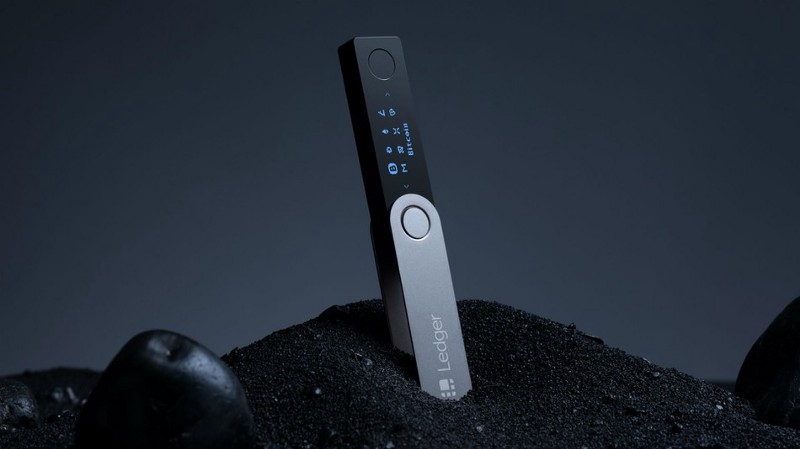
Ledger Wallet Features and Considerations

Hardware wallets play an important role in blockchain and the management of cryptocurrencies, and they are generally accepted as one of the safest means of storing digital assets. While both software and paper wallets provide additional strengths and weaknesses in terms of security, hardware wallets offer user-friendly interfacing, portability, and back-up contingencies.
“Hardware wallets are the best solution for 99% of users.” — Andreas Antonopoulos
Ledger is one of the earliest and top manufactures of consumer hardware wallets, enabling streamlined management of digital assets through each of their products. These devices are industry standard for their reliability and ease of use, though a number of lesser known features, security benefits, and operational uses should also be discussed.
Each initialized Ledger device can reliably generate single addresses based on the provided passphrase or seed. For Ethereum, an array of 5 distinct addresses will also be available (array 0 through 4) while pointing to the first address (0) in standard use.
These additional wallets are accessible through other Ethereum services, specifically MyEtherWallet or MyCrypto. While sending to any of these addresses is possible at any time, sending a transaction from, or determining these public keys, requires unlocking your device and connecting to either MEW or MyCrypto.
Cryptographically, there is absolutely no relation or connection between any of these 5 Ethereum addresses (unless transacting between them). However, it should be mentioned that interfacing these wallets through the Ledger Live application would create IP address associations with those wallet operations.

Another valuable and lesser known feature of Ledger devices is the ability to create additional hidden set of wallets. These hidden wallets are designed to safeguard some or most of the assets on the device in the event that the user’s PIN number, 24-word recovery phrase, or physical security are compromised.
These hidden wallets or accounts are generated on top of the existing 24-word recovery phrase, with the use of an additional 25th word or (up to 100 character length) passphrase. This is used to create a unique second seed, which generates another unique set of addresses. The passphrase can be attached to a secondary PIN for quicker access, or set as a temporary passphrase which requires re-entering before accessing these hidden wallets.
Note: advanced passphrase security is more complicated than standard setup and usage. Please carefully follow Ledger’s instructions and ensure that your 24-word recovery phase is safely backed up before proceeding.

Sending mining proceeds directly to your hardware wallet is an appealing option to bypass third-parties or exchanges, allowing full custody of digital assets. However, larger numbers of transactions may result in problems when attempting to send or spend these deposited balances.
Many hardware wallets have limited throughput and memory capacity to prevent tampering or malicious software and operations. As a consequence, signing a transaction in the device and creating an output requires the processing of each input to total the transaction amount. For example;
- A Ledger Ethereum wallet has received many small ETH transactions of roughly 0.01 ETH each
- To send 0.1 ETH, roughly 10 inputs or received transactions have to be processed or consumed
- To send 1 ETH, roughly 100 inputs or received transactions have to be processed or consumed
A moderate number of inputs can be handled, though a higher number will be more time consuming upon signing or potentially even fail. While this is not device breaking, some workarounds or precautions should be taken to prevent issues in the future:
- Use a software wallet or exchange wallet to handle larger amounts of transactions and to reliably combine frequent or greater numbers of inputs faster and more consistently
OR
- Begin batching and sending intermediate amounts of inputs across multiple transactions into larger outputs ahead of time, or when moving assets is required
It should be noted, this does not apply specifically to mining. Any value or large number of inputs regardless of transaction size will take more time and energy to process. Faucet deposits or numerous inputs can result in the same bottleneck. For more information, see Ledger’s support article.
Operational Security MeasuresWhile there are many checks to ensure your device security, almost no device is 100% secure or hack-proof. That being said, proper opsec (operations security) habits will provide a safer environment for managing your digital assets.
- Always purchase hardware directly through Ledger.com or authorized distributors to ensure buying authentic products (Note: Ledger does not use anti tamper seals)
- The Recovery sheet (for your 24-word recovery phrase) should be blank, never use a prewritten recovery phrase
- The device should not be initialized — never use any preconfigured device and always choose your own 24-word recovery phrase and PIN
- Only genuine devices will connect to Ledger applications
An example of a common threat involving hardware wallets and malware are man-in-the-middle-attacks. To protect against these types of threats, always compare your device and application screens for matching sending (or receiving) addresses before confirming any transactions to prevent any potential loss of funds.
So all things considered, take great care to protect the physical security of your device. Knowledgeable hackers of many skill sets can physically alter or augment a device to bypass some security measures, so always store your device privately and safely when not in use or within your possession.
“…your keys, your Bitcoin. Not your keys, not your Bitcoin.” — Andreas Antonopoulos

Ledger Wallets provide reliable storage and interfacing of digital assets for basic and advanced users. The importance of securely storing cryptocurrency should be apparent to everyone invested and not taken lightly. The added benefits of using hardware wallets and specifically Ledger devices are invaluable and should not be overlooked.